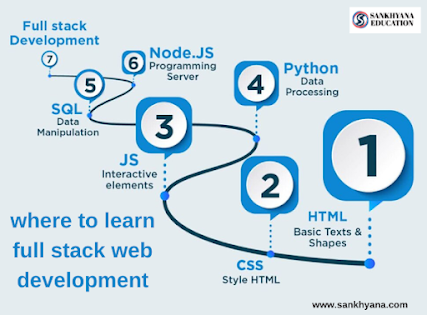The Data Science Skills Gap: How to Bridge the Gap
The Data Science Skills Gap: How to Bridge the Gap
Through collaboration and dedication, we can build a future where data is a catalyst for innovation and progress.
Visit Us: www.sankhyana.com
In today's rapidly evolving technological landscape, data has become the cornerstone of decision-making across
industries. As organizations gather and analyze vast amounts of data to drive insights, the demand for skilled data
scientists has surged. However, this surge in demand has brought to light a significant challenge: the data science
skills gap. In this blog, we will delve into what the data science skills gap is, its implications, and most
importantly, how we can bridge this gap to ensure a thriving and sustainable data-driven future.
Understanding the Data Science Skills Gap:
The data science skills gap refers to the disparity between the skills required by organizations to effectively
extract insights from their data and the skills possessed by the available workforce. With the exponential
growth of data, organizations need professionals who can not only collect and manage data but also analyze it
to extract actionable insights. This demands a unique blend of skills, including statistics, programming, domain
knowledge, machine learning, and more.
Implications of the Skills Gap:
The data science skills gap has several profound implications for businesses, individuals, and society at large:
1. Competitive Disadvantage: Organizations unable to tap into the full potential of their data due to a lack of
skilled data scientists may find themselves falling behind competitors who leverage data-driven insights for
innovation, efficiency, and strategic decision-making.
2. Talent Shortage: As the demand for data scientists continues to rise, the gap between the supply of qualified
professionals and the demand for their skills widens. This scarcity can lead to fierce competition for available
talent and higher compensation, making it challenging for smaller organizations to compete.
3. Inaccurate Insights: Without skilled professionals to interpret data accurately, there's a risk of drawing
incorrect conclusions from data analysis. This can lead to misguided strategies and decisions.
Bridging the Gap:
Addressing the data science skills gap requires a multi-faceted approach involving educational institutions,
industry collaboration, and individual efforts. Here are some strategies to bridge the divide:
1. Education and Training: Educational institutions must adapt their curricula to include more relevant data
science courses. Practical, hands-on experience in data manipulation, machine learning, and analytics should
be a central focus.
2. Upskilling and Reskilling: Encourage professionals from related fields to upskill or reskill in data science.
Online platforms, workshops, bootcamps, and certification programs offer accessible options for individuals
seeking to transition into the field.
3. Internships and Apprenticeships: Organizations can create internship and apprenticeship programs to provide
real-world experience to aspiring data scientists. This benefits both the organization, which gains fresh insights,
and the individual, who gains valuable experience.
4. Collaboration with Academia: Industry collaboration with academic institutions can lead to joint research
projects, workshops, and mentorship programs, ensuring that academic knowledge aligns with industry
requirements.
5. Diversity and Inclusion: Encouraging diversity within the data science field can bring in a wider range of
perspectives and skills, enriching the problem-solving process and fostering innovation.
6. Continuous Learning Culture: Within organizations, fostering a culture of continuous learning and skill
development is essential. Regular training, hackathons, and opportunities to work on challenging projects can
keep data science skills sharp.
7. Soft Skills Development: In addition to technical skills, data scientists need strong communication, teamwork,
and problem-solving abilities. Emphasize the development of these soft skills alongside technical training.
Conclusion:
The data science skills gap poses a significant challenge to the effective utilization of data for organizational
growth and societal advancement. However, with concerted efforts from educational institutions, industries, and
individuals, this gap can be bridged. By adapting education, embracing diversity, and promoting a culture of
continuous learning, we can ensure that the workforce is equipped with the skills needed to unlock the full
potential of the data-driven world. Through collaboration and dedication, we can build a future where data is a
catalyst for innovation and progress.
.png)



Comments
Post a Comment